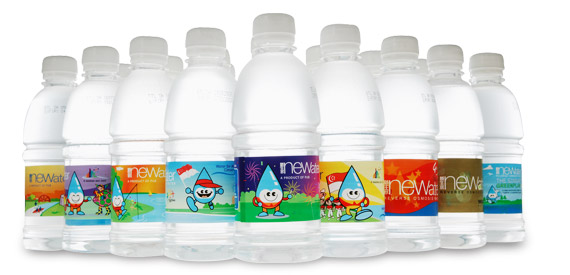Hi folks,
Please refer to my
previous post for an introduction to this topic of DIY testing of tap water by consumer.
First off, let me be the first to admit that I do not test my own tap water. The tap water testing I do is always part of our curriculum, whether as project work or practical training for our students. And occasionally, consultancy work.
However, if you have reason to suspect something is amiss in your tap water, do not be afraid to try testing yourself. Where you take your results from there depends on what you find. You may consider sending some samples to an accredited lab for a more accurate and precise analysis. (For folks in Singapore, I suggest looking for a
SAC (Singapore Accreditation Council) - SINGLAS accredited lab through their
website. But do look through another of my previous posts on
Testing your drinking water - the whys and why nots if you decide to go this route. It also contains the names of labs that I have ever had contact with.
Regardless, here are what I recommend for the independent thinking DIY consumer.
1. E. coli
Each package makes for only 1 test. What I like is it can test for both coliforms and E. coli. (You will need an additional UV light source for E. coli though.) Though not as idiot-proof as a test strip, it should still be manageable for a layperson.
Take note: you need to have an environment of a reasonably steady temperature for the incubation phase - 22-28oC for 48h OR 32-38oC for 24h. You also have to scrupulously clean your hands and contact surfaces to avoid contaminating the kit to produce a false positive result. Being a test kit, the result will not tell the concentration of E. coli in your water. It does tell you whether they are present OR not which is good enough since the guideline value is less than 1cfu (colony forming unit)/100mL water.
2. pH
My favourite pH test strips. We actually use these in our labs too. It provides testing in the full pH range of 0-14. Very idiot-proof - just dip one strip in a water sample and take out to match against the colour chart for your pH. This should be a standard item for every water tester.
3. Lead
A little pricey for 1 single test but simple enough to use. As it is
based on an immunoassay, it does not involve chemical reactions and heating. Like many test kits, its result shows lead content above or below 15ug/L. (The WHO guideline value is actually 10ug/L. In this case, the test kit is based on U.S. EPA standard.)
4. Copper
Idiot-proof test strip style of use. This is something we have used before and we find it quick and easy. It's colour graduations allow you to differentiate among 0, 0.2, 0.5, 1 and 3mg/L.
5. Electrical conductivity (EC)
Check out my
previous post for a discussion among 3 closely related parameters - EC, total dissolved solids and salinity. My personal preference is to measure EC because it is the fundamental parameter that the other 2 are usually derived from.
Unfortunately, there is no test strip for EC. The following is identical to the one I have been using for years except it is sold under a different brand. It is waterproof and floats on water if you accidentally drop it. Of course, the batteries have to changed periodically. And I changed sensor (the lower portion which goes into the water) once. Easy to measure. The only peeve is you have to calibrate it once in a while to get an accurate reading. And that involves getting a couple bottles of calibration solutions.
Please note that the above instrument is only suitable for drinking or fresh water. Do not try using it in brackish or seawater in case some of you are tempted to test it in your seawater aquarium.
6. Hydrogen sulphide
Yup, one more test strip kind of measurement. You will need to a good eye to differentiate the colours sometimes. But I suppose most test strips have this disadvantage.
7. Iron
A bit more complicated than a test strip as you have to add in a reaction powder (shown as foil satchels above). Still, should not be a problem for anyone who can follow instructions. Also something we have used comfortably in the past. Note that the lowest concentration of iron measured is 0.15mg/L since this is a test kit rather than a laboratory instrument costing tens of thousands.
8. Manganese
Another dip and read test strip. Colour graduations allow differentiation among 0.02, 0.05, 0.1, 0.2, 0.5, 1.0, 2.0mg/L.<0 .02="" 0.05="" 0.1="" 0.2="" 0.5="" 1.0="" 2.0="" mg="" p="">
I personally have not used items 1, 3, 6 and 8 but they look promising based on their descriptions and reviews. Item 6 has a mixed review but there is apparently little choice in test strips for hydrogen sulphide.
I also realise that not all the items can be directly shipped out of USA. Therefore, if you really need it and can't find it from another source, you may consider getting a freight forwarder to send it to your country from USA. If you are staying in Singapore like I do, my current favourite forwarder is Ezbuy based on its service and pricing.
<0 .02="" 0.05="" 0.1="" 0.2="" 0.5="" 1.0="" 2.0="" mg="" p="">























